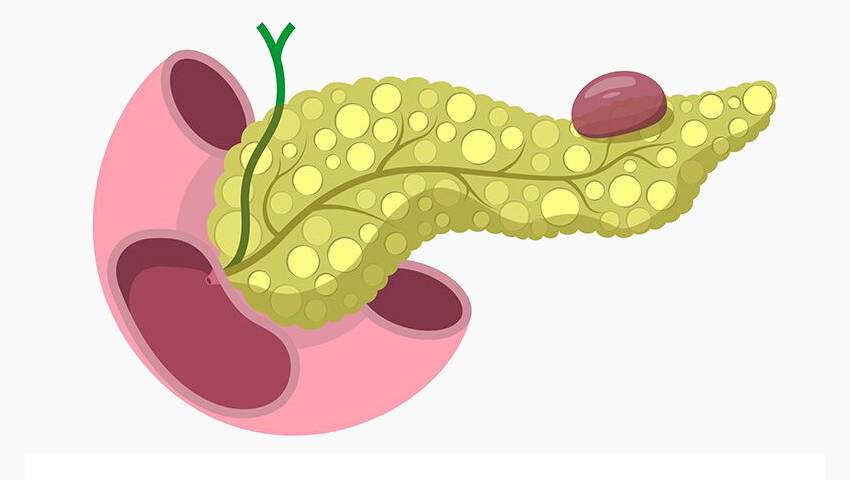
- 14/09/2024
- Dr. Srivatsan Gurumurthy
- 0 Comments
- Blog
All you know about the Pancreatic Pseudocysts
Dealing with unexplained belly or back pain? It could be more than just a common ache. Pancreatic pseudocysts, often caused by pancreatitis or injury, might be the hidden culprit behind your discomfort. These fluid-filled sacs can cause anything from mild discomfort to severe pain and complications if ignored. In this blog, guided by Dr. Srivatsan Gurumurthy is best Pancreatic Cancer Surgeon in Chennai, we’ll explore everything you need to know about pancreatic pseudocysts—from their causes and symptoms to effective treatments—so you can take control of your health.
What are Pancreatic Pseudocysts?
A pancreatic pseudocyst is a collection of fluid, enzymes, and debris that forms around the pancreas, typically covered by a fibrous wall. These cyst-like structures occur when the pancreas gets inflamed, causing damage to the pancreatic ducts and leading to fluid leakage. Unlike true cysts, pseudocysts do not have an epithelial lining but are contained in fibrous tissue. Pseudocysts can vary in size, and while some may resolve on their own, larger or symptomatic pseudocysts often require medical intervention.
What are the Causes of Pancreatic Pseudocysts?
Dr. Srivatsan Gurumurthy said common causes of pancreatic pseudocysts include:
- Acute Pancreatitis: Sudden inflammation of the pancreas is the leading cause. The inflamed pancreas may release digestive enzymes, causing tissue damage and fluid accumulation.
- Chronic Pancreatitis: Long-term inflammation and scarring of the pancreas can lead to the formation of pseudocysts.
- Pancreatic Trauma: Injuries to the pancreas, such as blunt trauma or surgical methods, can trigger pseudocyst formation.
- Pancreatic Surgery: Surgical interventions on the pancreas may sometimes result in the growth of pseudocysts.
- Gallstones and Alcohol Consumption: Both of these factors contribute significantly to the risk of pancreatitis, which in turn can lead to pseudocysts.
What are the Symptoms of Pancreatic Pseudocysts?
While small pseudocysts may remain asymptomatic, larger or infected pseudocysts can cause various symptoms:
- Abdominal pain (usually upper abdomen)
- Nausea and vomiting
- Bloating or a feeling of fullness
- Fever if infection occurs
- Jaundice, in cases where the pseudocyst obstructs bile ducts
If left untreated, pseudocysts may rupture, leading to internal bleeding or peritonitis, a life-threatening condition.
How to diagnose Pancreatic Pseudocysts?
To accurately diagnose a pancreatic pseudocyst, a variety of clinical reviews and imaging tests are required. Common diagnostic tools include:
- Ultrasound: Often the first imaging test performed, an ultrasound can show the presence and size of the cyst.
- CT Scan: Delivers a more detailed view of the pseudocyst and covering structures.
- MRI: Helpful in characterizing the cyst’s structure and detecting difficulties.
- Blood Tests: To check for high levels of pancreatic enzymes and indications of infection.
What are the Best Treatment Options for Pancreatic Pseudocysts?
Treatment depends on the size, location, and signs associated with the pseudocyst. Dr. Srivatsan Gurumurthy provides Pancreatic Diseases Treatment in Chennai and offers a variety of therapy approaches:
- Observation: Small pseudocysts that are asymptomatic may not require immediate intervention. Routine monitoring with imaging is advised.
- Drainage:
- Endoscopic Drainage: This is a minimally intrusive method where a flexible tube is used to drain the cyst into the stomach or intestines.
- Surgical Treatment: In cases where the pseudocyst is large, symptomatic, or difficult, surgery may be required. Surgical choices include:
- Internal Drainage: The pseudocyst is drained into the intestines to allow for absorption of the fluid.
- External Drainage: A tube is inserted through the skin to remove the fluid externally.
- Resection: In rare cases, part of the pancreas and the pseudocyst may be removed surgically.
Possible Complications of Pancreatic Pseudocysts:
If not treated properly, pancreatic pseudocysts can lead to difficulties such as:
- Infection: Infected pseudocysts can cause sepsis, a potentially life-threatening condition.
- Rupture: If a pseudocyst bursts, it can lead to internal bleeding and severe inflammation of the abdominal cavity (peritonitis).
- Obstruction: Large pseudocysts may block the bile ducts or the intestines, causing jaundice or intestinal blockage.
- Abscess Formation: Accumulation of pus within the pseudocyst may result in an abscess, requiring immediate drainage.
How to Prevention and Management?
Preventing pancreatic pseudocysts mainly includes handling the underlying causes. In cases of pancreatitis, lifestyle changes can reduce the risk of pseudocyst formation:
- Alcohol Abstinence: Since alcohol abuse is a common cause of pancreatitis, stopping alcohol is critical in preventing recurrences.
- Healthy Diet: Eating a low-fat diet and keeping a healthy weight helps reduce the risk of pancreatic issues.
- Regular Monitoring: If you’ve had pancreatitis or pseudocysts before, regular check-up with imaging and blood tests can help detect issues early.
Pancreatic pseudocysts, while often manageable, require timely and useful medical intervention to prevent difficulties. Dr. Srivatsan Gurumurthy is the best Liver Transplant surgeon in Chennai and He says the importance of understanding the condition and seeking immediate medical advice if signs arise. With proper care and management, someone can guide the challenges posed by pancreatic pseudocysts actually. Contact GEM Hospital, Chennai today to schedule a consultation with Dr. Srivatsan Gurumurthy.
